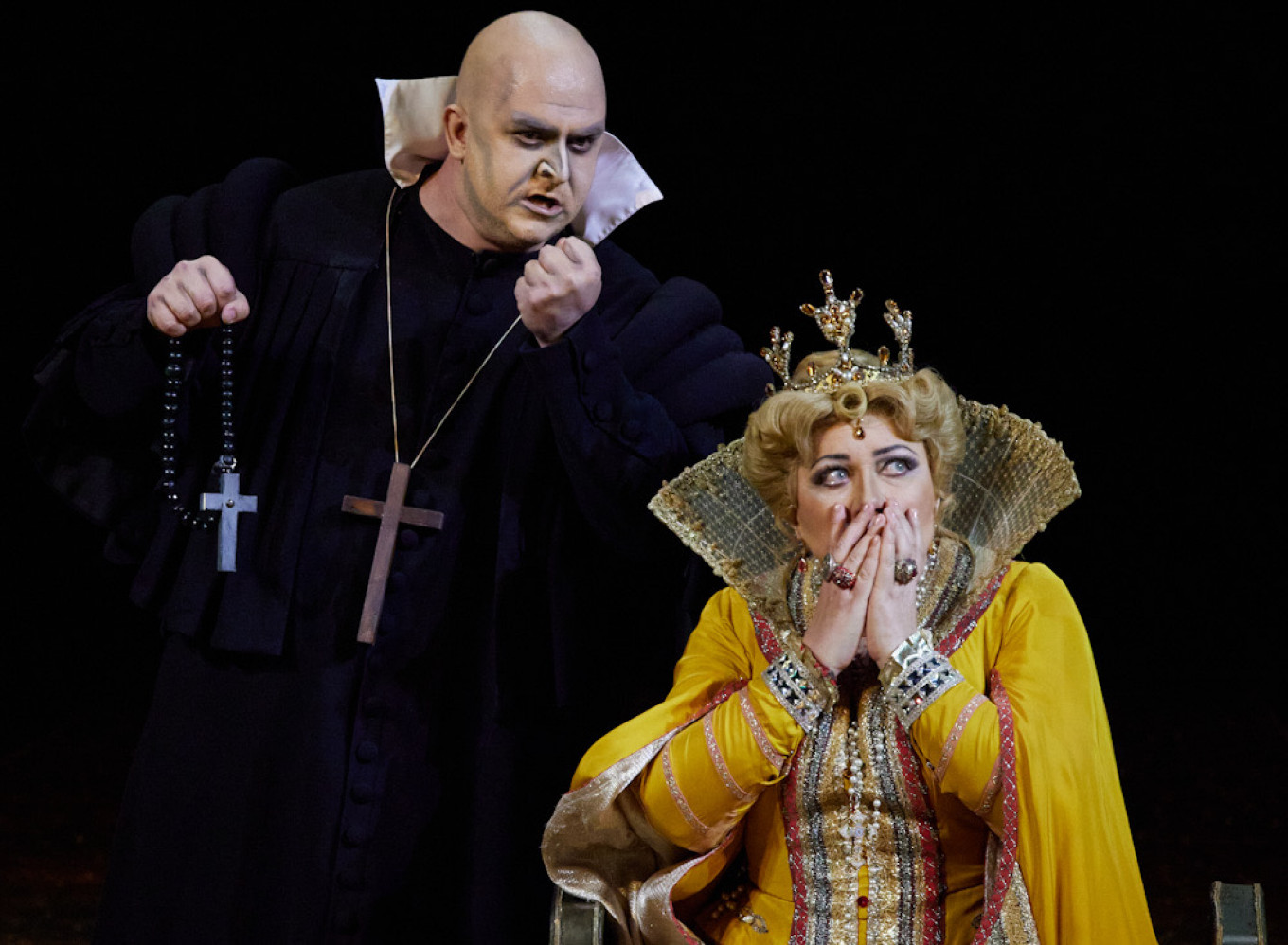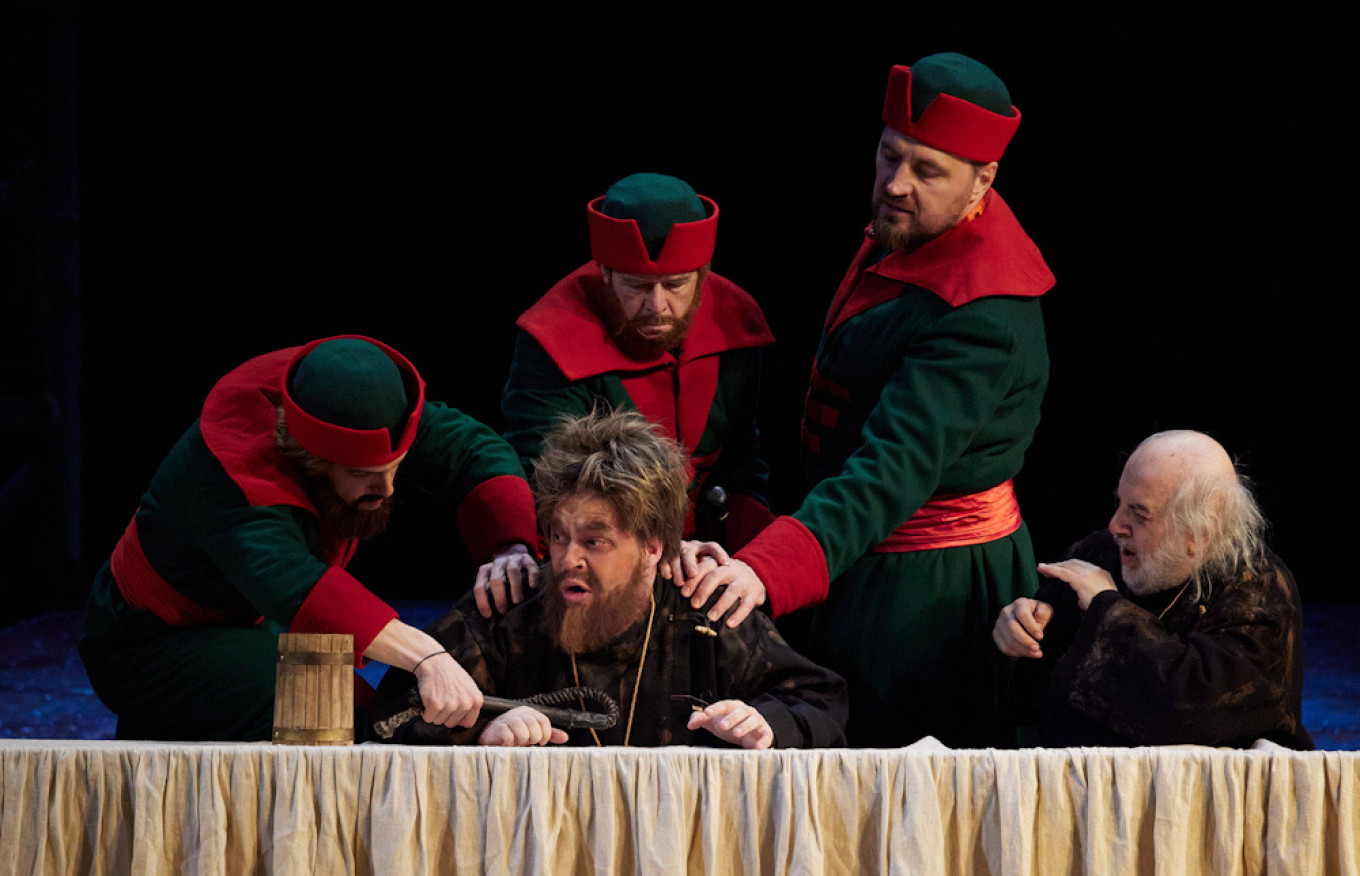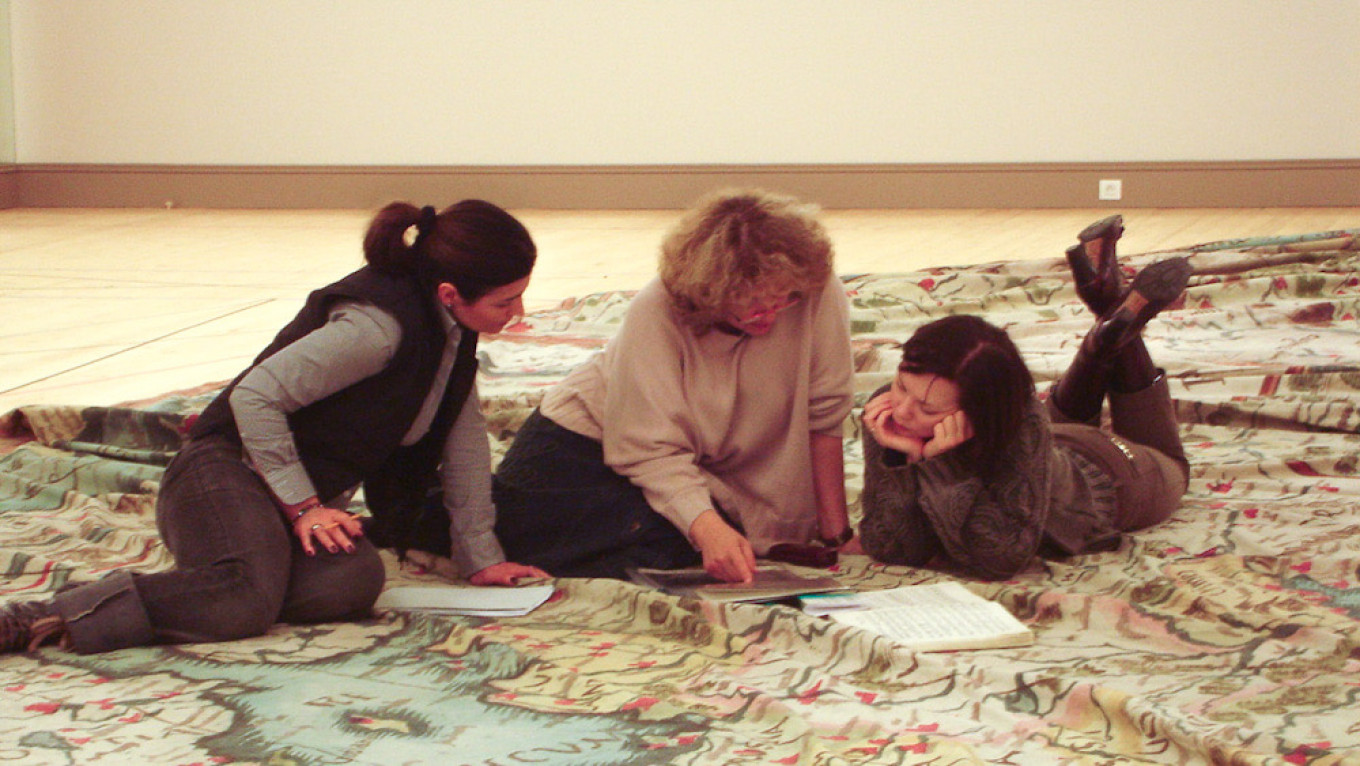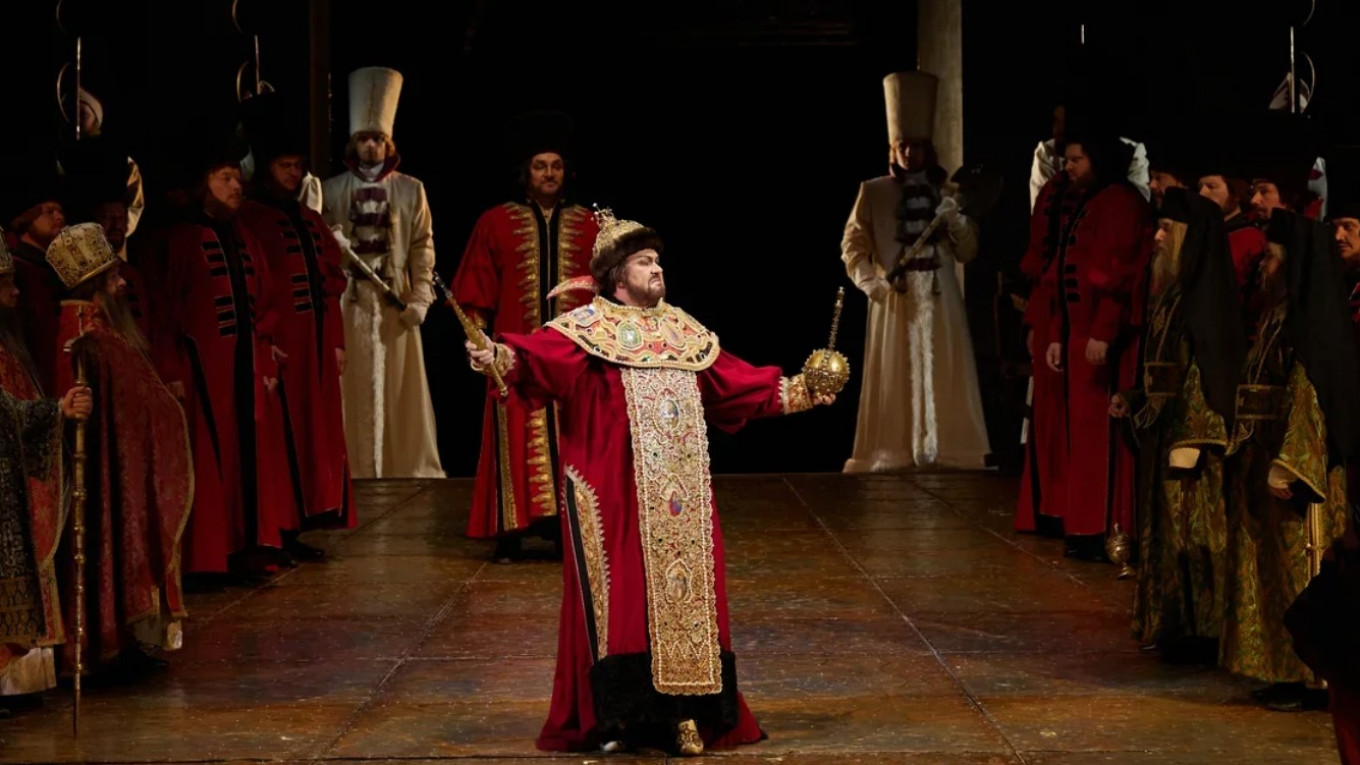In 1983 film director Andrei Tarkovsky was invited by the Royal Opera House (ROH), Covent Garden, to stage a production of the opera “Boris Godunov,” composed by Modest Mussorgsky. After Tarkovsky’s death and changes to cultural policies in the Soviet Union, the Covent Garden production was brought to the Mariinsky Theater in 1990. In 2006 the Mariinsky revived it, albeit with some changes, and has revived this production on stage this year.
The opera production has had a long life in London, too. Irina Brown, who along with Stephen Lawless assisted Tarkovsky when he was directing the opera in 1983, put on – jointly and separately - four revivals at Covent Garden.

The first production in London
In 1983 Brown was working with a small opera group on the London fringe. One of her workshops was attended by the ROH head of staff directors, and soon afterwards she got a call from him asking if she’d be interested in being second assistant director on a new production of “Boris Godunov.” When she learned that it was to be directed by Andrei Tarkovsky, she said yes without a moment’s hesitation. Conductor Claudio Abbado had the idea of inviting Tarkovsky and received enthusiastic support from Sir John Tooley, the head of the Opera House.
The opera tells the story of Boris Godunov, who is coronated after the death of the young tsar Fyodor. But Godunov’s reign and the fate of the country are threatened when a Russian monk who has fled to Poland wants to take the throne as Dmitry, the younger half-brother of Tsar Fyodor. Dmitry had been murdered on orders of Godunov. At the end of the opera, Godunov, mad from guilt, dies as the Polish army marches towards Moscow and a “holy fool” on the square weeps for Russia’s tragic fate.
It was Tarkovsky’s first opera production. He brought to the project his vision of Russia, a bloody history and long-suffering people. But Tarkovsky’s was not an overtly political interpretation. He focused on the examination of Boris’s conscience, tormented by the murder of an innocent child, that haunts Boris throughout the story, and on the meaningless deaths of Russian people bewailed by the “holy fool.” Tarkovsky’s filmmaker’s imagination allowed him to create a rich and intricate visual framing of the story with the help of lighting designer Robert Bryant, whose use of chiaroscuro lighting gave Nicolas Dvigoubsky’s spare set and richly coloured costumes an air of mystery.
Brown recalled that the crew was inspired by Tarkovsky’s ideas, “although sometimes what he was trying to achieve on stage was seemingly impossible. For example, Andrei was determined to do a filmic cut from the sumptuous and crowded coronation scene [where Boris is crowned] straight into Pimen’s cell scene [where the young monk who will portray Dmitry learns of the boy’s murder] without any change of scenery. It was an almost impossible task to make 150 people spread all over the set disappear without bringing down the curtain.” But they did it, and the audiences were in awe as the brightly lit coronation scene was almost instantly supplanted by an empty, dimly lit stage with the lonely figure of Pimen slowly moving down the ramp, occupying exactly the same space where the coronation crowds were milling about only seconds before.

“Andrei was precise, detailed and generous in his instructions to us and to the cast,” Brown said. “Andrei was particularly interested in creating small individual scenes within the crowd, picking out individual chorus members to draw focus to a particular moment here and there.”
One day the ROH props department left some objects used in the previous production of Boris Godunov in 1954, directed by Peter Brook. Among them was an extremely large globe intended for a scene in which the young Fyodor studies the map of Russia. There was no need for the globe in Tarkovsky’s production, as the whole of the central ramp was enveloped in a huge carpet-like map of Russia that Fyodor crawled over as he sang. But Tarkovsky had the old prop gilded and hung as a gigantic pendulum, the image of fate that appears first at the end of the nursery scene to the sound of Kremlin chimes, and later in the death scene, counting down the final moments of Boris’s life.

The revival in St. Petersburg
Robert Lloyd, who sang Boris in the Tarkovsky original, came to reprise his role at the Mariinsky in 1990. “When Robert Lloyd turned up for his first rehearsal in 1990, a few weeks before the premiere, he was to be the first foreign bass to sing the part of Boris at the Mariinsky. If that didn’t make him nervous, he was about to rehearse the death scene at 10 a.m. — not something any bass is ever keen to do.” The whole of the Mariinsky cast was present in the auditorium, impatient to hear what this Englishman had to offer. And Lloyd did not disappoint. The Mariinsky company gave him a standing ovation not only for his singing and acting, but for his impeccable Russian.
The opera was filmed at the Mariinsky Theater in 1990, although the light and darkness, so dramatic on stage, had to be altered for television. “There was a lot of chiaroscuro in the stage lighting, which would have been far too dark for the TV broadcast. Certain adjustments were made to adapt it for the broadcast. No mis-en-scenes were changed. But the lighting levels were increased…[all the same] what you see in the film is close to the Mariinsky production of 1990.”
Now 38 years have passed since Tarkovsky’s original work at Covent Garden, 31 years since Tarkovsky’s version was performed at the Mariinsky, and 15 since the first revival in 2006, directed by Irkin Gabitov. Although the general outlines of Tarkovsky’s direction have been kept, the Mariinsky production has lost some of its original vigour and vibrancy. But it remains the only revival of Tarkovsky’s original work currently performed on stage in Russia and is well worth seeing for that very reason.
For more information about the MariinskyTheater and this production, see their site in English here.
A Message from The Moscow Times:
Dear readers,
We are facing unprecedented challenges. Russia's Prosecutor General's Office has designated The Moscow Times as an "undesirable" organization, criminalizing our work and putting our staff at risk of prosecution. This follows our earlier unjust labeling as a "foreign agent."
These actions are direct attempts to silence independent journalism in Russia. The authorities claim our work "discredits the decisions of the Russian leadership." We see things differently: we strive to provide accurate, unbiased reporting on Russia.
We, the journalists of The Moscow Times, refuse to be silenced. But to continue our work, we need your help.
Your support, no matter how small, makes a world of difference. If you can, please support us monthly starting from just $2. It's quick to set up, and every contribution makes a significant impact.
By supporting The Moscow Times, you're defending open, independent journalism in the face of repression. Thank you for standing with us.
Remind me later.







